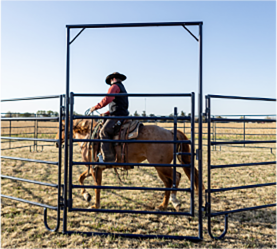The Importance of Site Fencing in Construction and Property Management
When it comes to managing a construction site or maintaining a property, safety and security are paramount. One of the most effective ways to uphold these standards is through the use of site fencing. Site fencing serves multiple purposes, acting as a physical barrier to protect both the construction site and the surrounding environment. This article will explore the importance of site fencing, its benefits, types, and best practices for implementation.
Enhancing Safety
One of the primary reasons for installing site fencing is to enhance safety. Construction sites often contain hazardous materials, heavy machinery, and other potential dangers that could pose a risk to unauthorized individuals. Site fencing acts as a deterrent, preventing curious passersby, especially children, from wandering onto the site and potentially injuring themselves. By creating a secure perimeter, site fencing ensures that the risks associated with construction activities are confined to authorized personnel only.
Moreover, in addition to protecting the public, site fencing also safeguards workers on-site. It helps identify boundaries and reduces the likelihood of accidents caused by miscommunication or misunderstandings about the work area.
Deterring Theft and Vandalism
Construction sites are prime targets for theft and vandalism, given the high value of materials and equipment often stored on-site. Metal, tools, and machinery can significantly contribute to a company's expenses if stolen or damaged. By implementing sturdy site fencing, property managers can deter potential thieves and vandals from accessing the area. A secure perimeter sends a clear message that the site is monitored and protected, making it less attractive to would-be criminals.
In addition to physical barriers, many site fencing solutions can be enhanced with surveillance cameras and motion detectors, providing an additional layer of security. This integrated approach can further discourage criminal activity and help in quick response should an incident occur.
Defining Property Boundaries
In addition to safety and security, site fencing plays a crucial role in defining property boundaries. Clearly delineated borders help avoid disputes over land ownership and use. For property managers, having a well-defined boundary can also assure neighbors and the community that the site will be respected, thereby fostering better relationships and cooperation.
Types of Site Fencing
There are various types of site fencing available, each suitable for different needs and environments. Here are some popular options
site fencing

1. Chain Link Fencing This is one of the most common types of site fencing, recognized for its cost-effectiveness and versatility. Chain link fences provide visibility, allowing for monitoring while still offering a secure barrier.
2. Wooden Fencing For projects where aesthetics matter, wooden fencing can provide an attractive option. However, it may not be as durable as chain link or barbed wire fencing, making it better suited for short-term projects.
3. Temporary Fencing Often used for short-term construction projects, temporary fencing is quick to set up and can be easily relocated. This type of fencing is typically made of lightweight materials and can be equipped with warning signs for added safety.
4. Barbed Wire Fencing Used primarily for high-security sites, barbed wire fencing serves as a strong deterrent against unauthorized access.
Best Practices for Implementation
To maximize the effectiveness of site fencing, consider the following best practices
- Regular Inspections Conduct periodic inspections of the fencing to ensure it remains in good condition and is free of breaches.
- Signs and Warnings Clearly post signs indicating that the area is private property and that access is prohibited. This further communicates the purpose of the fencing.
- Integrate Technology Consider combining physical fencing with surveillance systems and alarm systems for enhanced security.
- Community Engagement Foster a positive relationship with the local community by informing them about the site activities and the measures taken to ensure safety.
In conclusion, site fencing is a critical component of construction and property management. It not only enhances safety and security but also helps define property boundaries and deter theft and vandalism. By understanding the importance and types of site fencing, as well as implementing best practices, property managers and construction firms can create a safer environment for everyone involved.
-
Why Galvanized Trench Cover Steel Grating Resists Corrosion
NewsJul.10,2025
-
The Versatility and Strength of Stainless Expanded Metal Mesh
NewsJul.10,2025
-
Load Calculations in Steel Grating Platforms
NewsJul.10,2025
-
Keeping Pets and Kids Safe with Chicken Wire Deck Railing
NewsJul.10,2025
-
Hole Diameter and Pitch for Round Perforated Metal Sheets
NewsJul.10,2025
-
Aluminium Diamond Mesh in Modern Architecture
NewsJul.10,2025
Subscribe now!
Stay up to date with the latest on Fry Steeland industry news.

